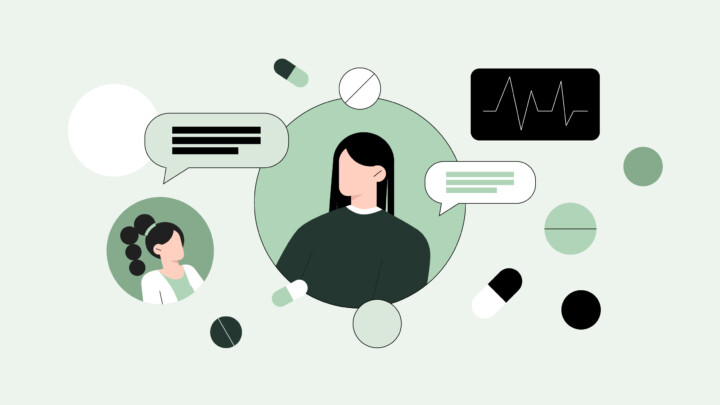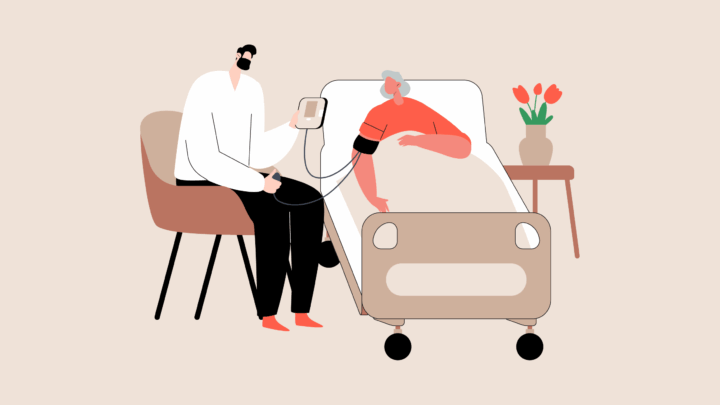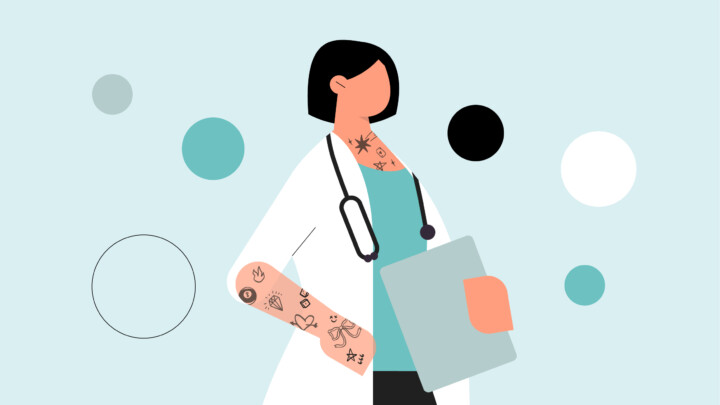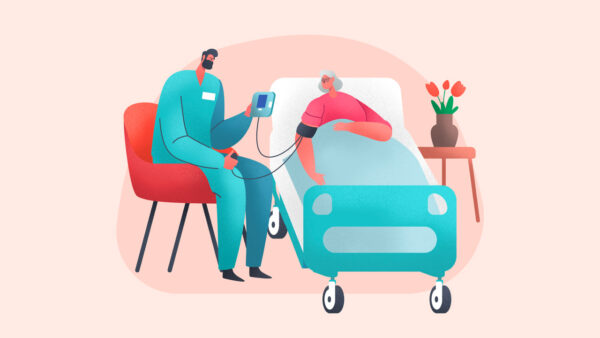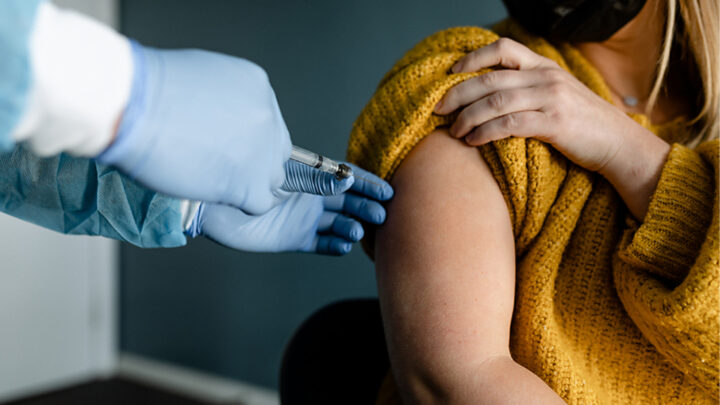
95% of physicians believe patients respond better to healthcare professionals (HCPs) who demonstrate empathy and compassion,1 according to a recent Sermo poll.
However, despite this overwhelming agreement, 71% of doctors express concern that they often fail to show vulnerability and genuine emotion in their day-to-day jobs, which could negatively impact patient outcomes.1
So why is displaying empathy so vital in healthcare, and why do so few physicians manage to show the level of genuine emotion they’d like to?
This article explores insights from the Sermo community, including both quantitative data and personal reflections, to understand the barriers to empathetic care and what can be done to foster a more compassionate healthcare environment.
Why displaying humanity matters in doctor bedside manner
Empathy is not just an ideal in medicine, it directly impacts patient outcomes.
Studies show that patients of highly empathetic doctors have better control of chronic conditions like diabetes and lower cholesterol levels.2 Empathy increases patient satisfaction by 52% – improving survival rates, medication adherence, and reducing hospital readmissions.3
Trust is the foundation of an effective doctor-patient relationship, and empathy fosters that trust. In fact, one GP on Sermo notes, “Patients would rather a doctor with poorer knowledge but more empathy than one with excellent knowledge but lacking it.4” This underscores the idea that technical expertise alone is not enough and patients prioritize feeling heard, understood and cared for, which can ultimately lead to better adherence and health outcomes.
Empathy also enhances the efficacy of treatment itself. Studies show that empathic consultations reduce post-operative morphine needs by 50% and decrease pain, depression, and anxiety by 20%.3 This reinforces the idea that care is about understanding the patient as a person. A physician on Sermo echoes this, stating, “Being sympathetic, empathetic, and showing kindness fosters real connections.4”
Despite its benefits, empathy is not just a “nice-to-have” in healthcare, it is a critical factor in building trust, which improves patient outcomes and enhances the overall effectiveness of treatment.
Barriers to empathy: what’s holding doctors back?
Emotional exhaustion and burnout
A staggering 87% of physicians believe emotional exhaustion and burnout contribute to suppressing empathy,1 preventing doctors from fully engaging with patients. The relentless pressures of long shifts, administrative burdens, and high patient loads leave little emotional capacity for compassionate care.
A GP on Sermo notes, “Burnout often makes us just want to finish our work day, seriously affecting communication with families and patients.4” A Family Medicine physician on Sermo echoes this, describing how exhaustion from residency and later career demands erodes the ability to connect with patients.4
Unrealistic expectations from both hospital systems and patients only add to the strain, as a Neurologist on Sermo explains: “The amount of work demanded from physicians and the pressure they need to adapt to contribute to suppressing emotions.4”
One study shows that higher levels of burnout among healthcare providers were associated with poorer-quality healthcare and reduced safety for patients. 5 Therefore, addressing physician well-being is essential for sustaining high-quality, empathetic care.
Medical training and the suppression of emotion
Beyond workload issues, 58% of physicians believe traditional medical training actively discourages empathy,1 emphasizing clinical objectivity over emotional connection.
An Obstetrics physician on Sermo argues, “Traditional medicine is fairly rigid and often avoids teaching the human side of healing.4”
From the outset, many compassionate individuals are filtered out by selection processes focused on academic excellence rather than emotional intelligence.4 A Family Medicine physician on Sermo points out that this education system “maintains a significant distance from patients,4” making it harder for doctors to develop an emotionally engaged bedside manner.
Without formal training in balancing professionalism with emotional connection, many doctors default to detachment. Therefore, medical training needs to integrate emotional intelligence and empathy development, ensuring doctors are equipped to handle patients in the way they’d like to be seen.
The fine line between professionalism and vulnerability
Even when doctors wish to show empathy, they often struggle to find the right balance between professionalism and emotional engagement.
An Internal Medicine physician on Sermo acknowledges, “There’s a delicate balance between empathy and professionalism that every doctor must find.4” Meanwhile, an Ophthalmologist warns that “excessive or inappropriate displays of emotion may affect a physician’s ability to make objective and rational clinical decisions.4”
Despite this, a GP on Sermo maintains that “being human and professional should coexist in medical practice.4” While objectivity is critical for sound medical decision-making, suppressing empathy entirely can damage patient trust and satisfaction.
Practical steps to foster empathy in healthcare
Physicians on Sermo identified four key areas that could help bridge the gap between professional detachment and compassionate care.
1. Reforming medical education1
16% of physicians on Sermo believe that medical training should incorporate empathy-building practices rather than discouraging emotional connection.4
One Traumology expert on Sermo states, “The display of the ‘human side’ is not taught in medical school and is relatively discouraged.4”
According to Sermo members, changing medical education to include emotional intelligence and patient-centered communication training could help future doctors balance clinical detachment with human connection.1
2. Encouraging emotional support among peers1
20% of physicians on Sermo believe support from colleagues is vital in reducing emotional exhaustion and fostering resilience. A GP on Sermo highlights that “Encouraging emotional support among peers is crucial. It helps relieve the emotional burden that clinicians have.4”
Sermo provides a space for physicians to share their challenges openly and receive support—something many doctors believe should be encouraged and more widely promoted across medical networks.1
3. Reducing workload and stress1
41% of physicians on Sermo see overwork as the most significant barrier to empathy. A Critical Care physician on Sermo notes, “Reducing work stress is essential to improving the doctor-patient relationship.4”
When doctors have more manageable schedules, they have the mental space to engage empathetically. Therefore, according to Sermo members, implementing optimized scheduling, administrative support, and realistic patient quotas could give doctors the time and mental capacity to engage empathetically with patients.1
4. Providing training in empathetic communication in patient care1
21% of physicians on Sermo believe small habits like active listening and personalized conversations enhance doctor-patient communication. A Family Medicine Doctor on Sermo shares, “I try to create small talk with patients… It creates lasting relationships.4” While one GP reminds us: “Empathy is a muscle, train it every day.4”
Sermo members believe that medical education and professional development programs could integrate structured empathy training, including active listening exercises and real-world patient interactions, to ensure compassionate communication becomes a core clinical skill.1
The role of technology in enhancing or hindering connection
Technology has transformed healthcare, offering new ways to engage with patients and streamline processes. However, while it can support more personalized and efficient care, it also presents challenges to genuine human connection.
1. Telemedicine
Telemedicine allows for greater accessibility and continuity of care, especially in remote areas. However, it removes key non-verbal cues that are crucial for empathy.
An Internal Medicine physician on Sermo notes, “Telemedicine, while necessary for safety or convenience, lacks the physical touch and presence that often conveys comfort and empathy.4”
Without eye contact, body language, and human touch, virtual consultations risk feeling detached and transactional, eroding doctor-patient care. To bridge this gap, physicians could be trained in digital communication strategies that enhance empathy.
2. Administrative burden
Electronic health records (EHRs) give doctors quick access to patient histories, enabling more informed treatment decisions.
However, the time spent inputting data can come at the cost of patient interaction. One GP on Sermo highlights this trade-off: “Overworked environments and administrative overload can lead to disconnection with the human component of the doctor.4”
To mitigate this, healthcare systems could find ways to reduce administrative burdens and allow more time for meaningful patient interactions.
3. The risk of impersonal interactions
Technology can support mental health resources for doctors, helping reduce burnout. But an over-reliance on digital tools risks making doctor-patient interactions feel scripted. One Radiologist on Sermo warns, “Professional ‘empathy’ techniques sound fake… Patients can deal with a doctor who’s solely professional, but no one wants a doctor who seems phony and manipulative.4”
Technology should complement, not replace, human connection in healthcare. Finding balance is key, using digital tools for efficiency while preserving the essential human touch.
Your takeaway
Empathy in healthcare strengthens trust, improves patient outcomes, and reduces physician stress. However, barriers like burnout, rigid training, and administrative burdens make it difficult for caring doctors to express their human side.
The future of compassionate care requires systemic changes:
- Integrating emotional intelligence into medical education to equip doctors with communication skills.
- Shifting medical culture to value vulnerability, balancing professionalism with empathy.
- Reducing bureaucracy, allowing doctors more time for meaningful patient interactions.2
By reshaping training, reducing stress, and fostering emotional connection, healthcare can evolve into a system where empathy is standard practice, not an afterthought.
Join the conversation on Sermo
Compassionate care is at the heart of great medicine, but balancing empathy with the realities of modern healthcare isn’t easy. Join Sermo to discuss how you navigate these challenges in your own practice with your peers.
Footnotes
- Sermo, 2024. Poll of the Week: The Challenges Doctors Face in Revealing Their Human Side [Poll]. Sermo Community.
- Derksen F, Bensing J, Lagro-Janssen A. Effectiveness of empathy in general practice: a systematic review. Br J Gen Pract. 2013 Jan;63(606):e76-84. doi: 10.3399/bjgp13X660814. PMID: 23336477; PMCID: PMC3529296.
- University of Technology Sydney (UTS), 2024. Enhancing and examining empathy skills in healthcare students and clinicians.
- Sermo member, 2024. Comment on Poll of the Week: The Challenges Doctors Face in Revealing Their Human Side [Poll]. Sermo Community [Private online forum].
- Salyers MP, Bonfils KA, Luther L, Firmin RL, White DA, Adams EL, Rollins AL. The Relationship Between Professional Burnout and Quality and Safety in Healthcare: A Meta-Analysis. J Gen Intern Med. 2017 Apr;32(4):475-482. doi: 10.1007/s11606-016-3886-9. Epub 2016 Oct 26. PMID: 27785668; PMCID: PMC5377877.


